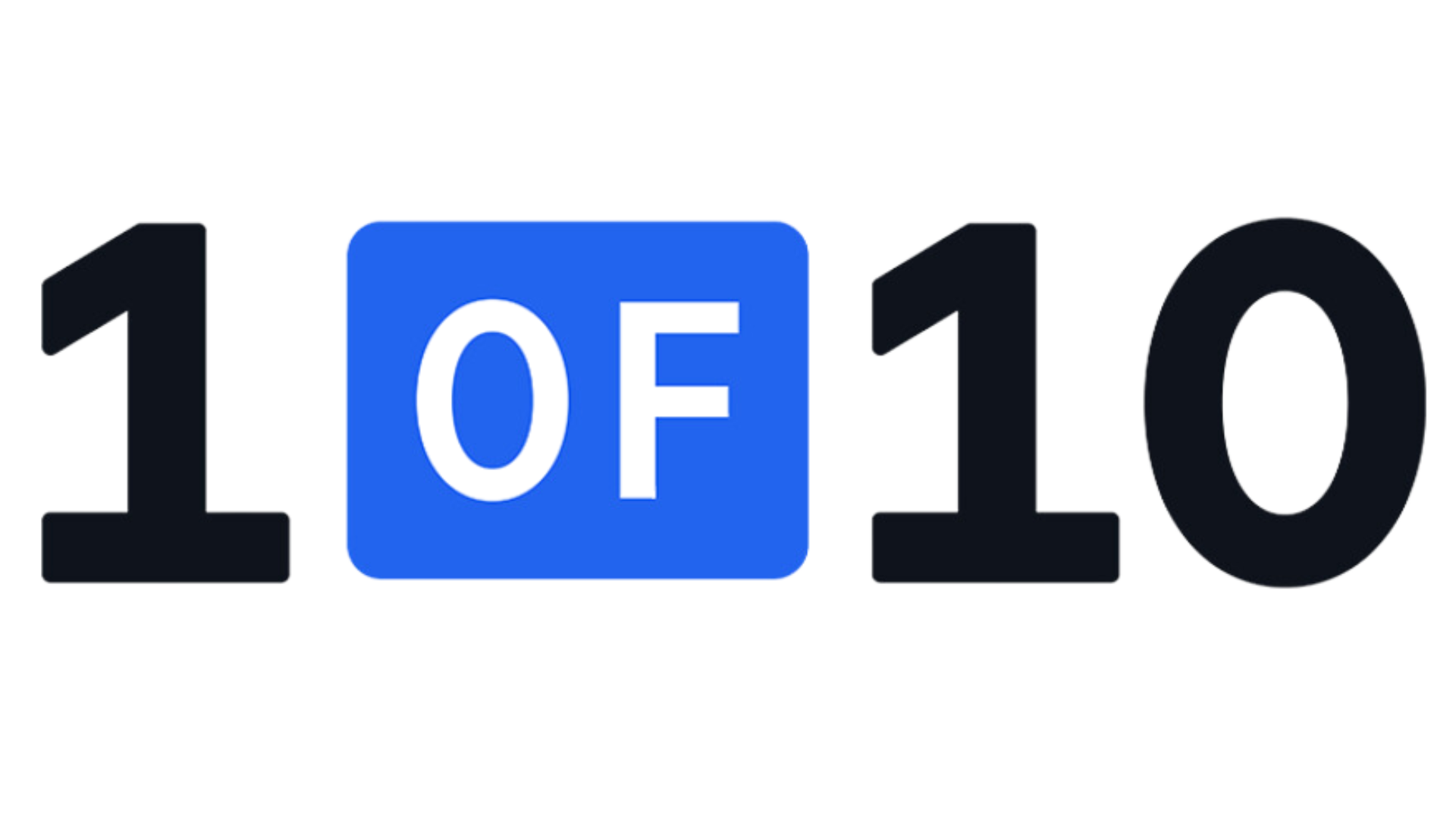Storytelling Techniques Top YouTubers Use to Keep Viewers Hooked
What separates a decent video from one that holds millions of people all the way through? It’s not just editing or ideas, it’s storytelling. This guide breaks down 13 advanced yet practical techniques creators use to keep attention, build tension, and craft moments that truly land.
The best videos aren’t just well-shot or well-edited, they’re well-told. While titles and thumbnails might earn the click, it’s storytelling that earns the watch. And yet, most creators focus only on surface-level tactics: flashy intros, clickbait hooks, or endless cuts.
But great YouTubers do something else entirely. They understand how to guide a viewer’s attention, build momentum, and craft scenes that people want to stick with, not skip through.
This guide breaks down 13 proven storytelling techniques used by some of the platform’s most watched and respected creators. Whether you're just starting out or already uploading regularly, these are the methods that can turn your videos into stories worth finishing.
Let’s start with one of the most overlooked techniques in the game: tension before payoff.
1. The Overlooked Trick That Elevates Storytelling on YouTube
Why Most Payoffs Don’t Hit as Hard as They Should
Plenty of creators understand the value of a strong hook or flashy payoff. But what separates good videos from great ones often happens just before the moment that matters most.
That piece is tension, the build-up that gives the payoff its weight.
When creators skip this, they risk viewers checking out early or skipping ahead. And when it’s used well? It’s one of the fastest ways to increase watch time and emotional impact.
Tension First, Payoff Second
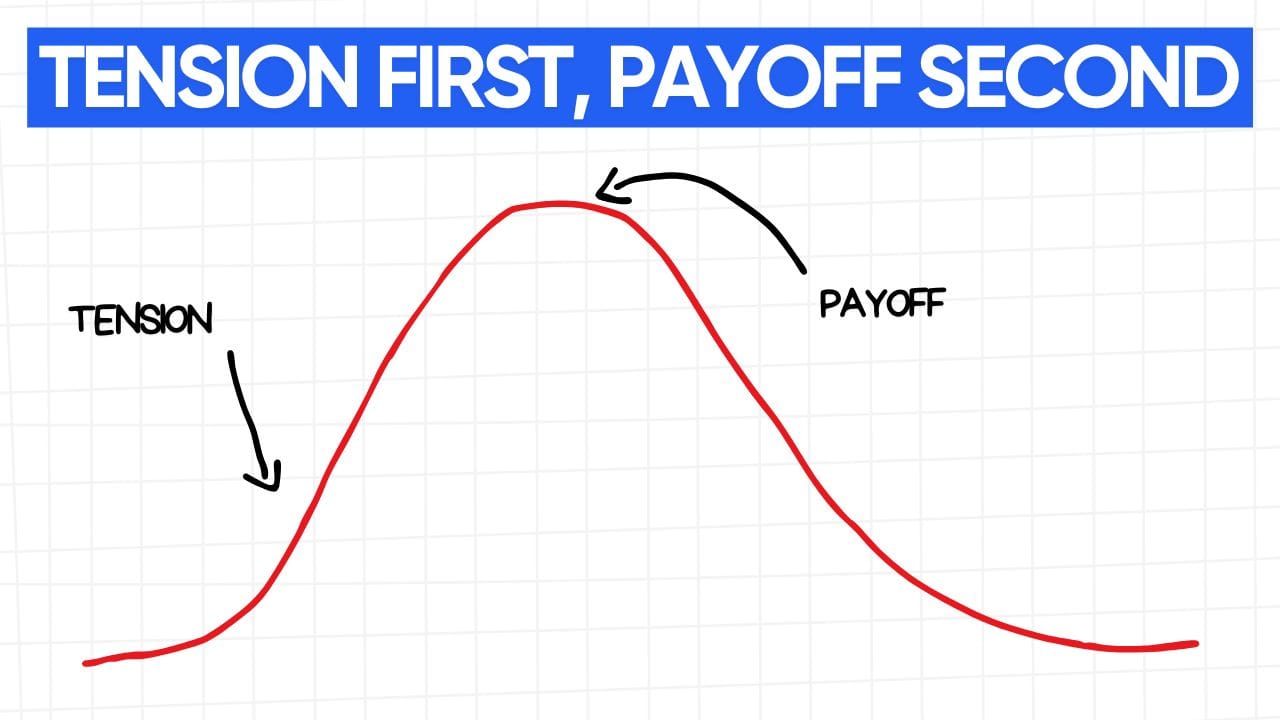
Think about it like stretching a rubber band. The more tension, the more satisfying the snap.
That same idea works with video. When you let a scene breathe, hint at something coming, or insert a small mystery, it makes the resolution feel earned. The viewer has waited, now they’re rewarded.
What This Does for Retention
The key is pacing. When creators take the time to build anticipation, through visuals, voiceover, or structure, it encourages viewers to stay. Not just for the content, but for the experience of waiting to see how it plays out.
Used right, tension becomes one of the most powerful tools in storytelling. It gives the payoff room to breathe. And it makes the viewer care about what’s coming next.
2. Retention and Payoff: Fixing the Drop-Off Problem
The Problem: Viewers Leaving Before the Best Part
You’ve probably seen it in your analytics, a dip in the graph right before something big happens. It’s a common pattern. The video builds toward a moment, but just before it lands, people drop off.
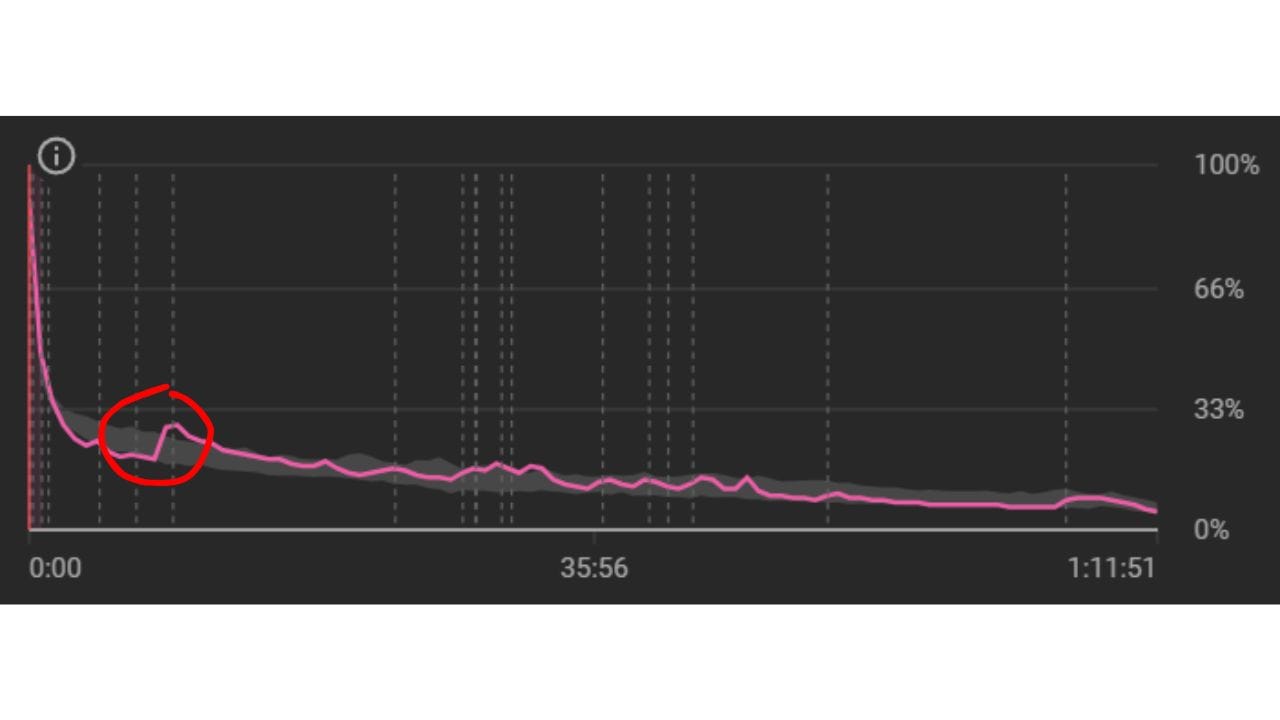
This usually happens when the viewer feels like they’ve already seen what they came for, or they’re not convinced the next moment is worth waiting for.
Real-World Example: WinterKloudz
One creator dealing with this issue was WinterKloudz. Even though his videos were well-edited and entertaining, there were consistent drop-offs just before payoffs.
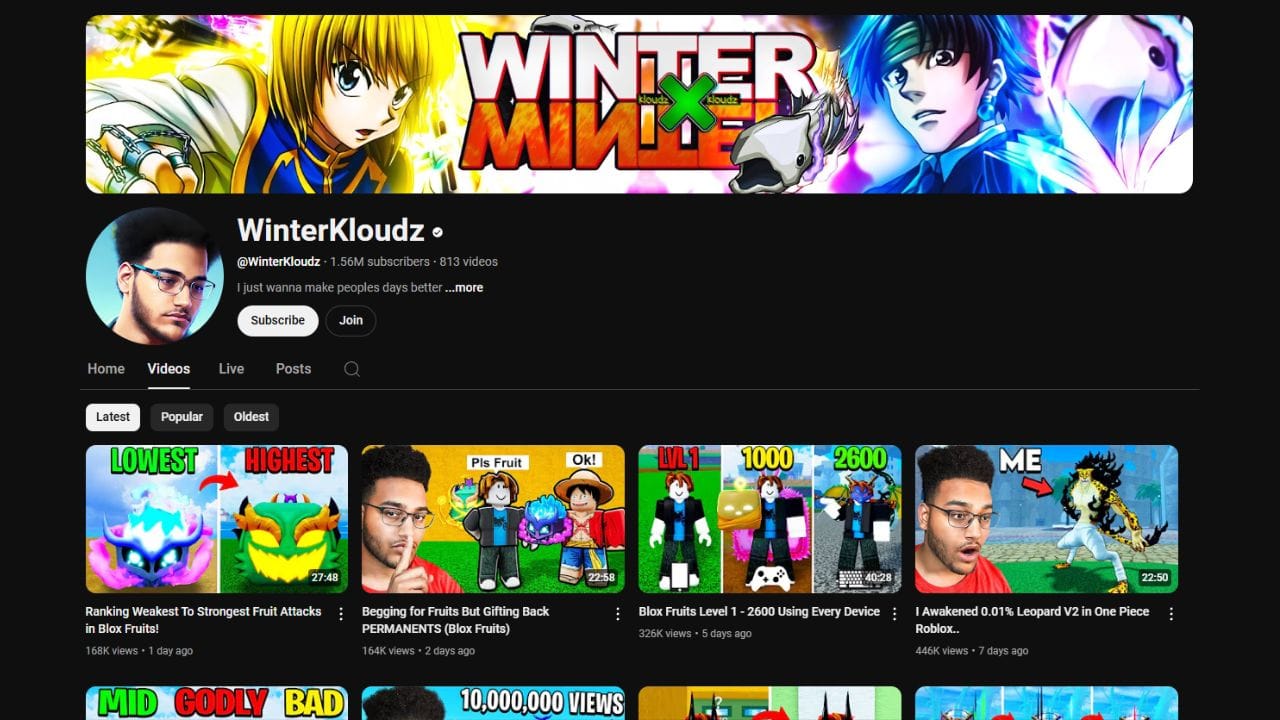
Instead of changing the whole structure, the team focused on one thing: how the story led into each moment.
They began adding small moments of tension before major scenes, lines that teased what was coming, pauses that let the audience lean in, and short setups that raised questions.
The Fix: Small Tweaks, Big Results
These weren’t major edits. The visuals stayed the same. The topics stayed the same. But the emotional timing improved.
By reshaping the pacing around big reveals, the payoff felt stronger. Viewers weren’t just watching, they were waiting.
That change alone pushed average watch time from around 8–10 minutes to over 12 minutes on a 20-minute video.
Why It Works
If a video gives away the payoff too quickly, or doesn’t build toward it, the audience feels like they’ve seen enough. But if there's just enough space, just enough suspense, the same moment becomes more rewarding.
Better pacing builds curiosity. And curiosity keeps people watching.
3. The Hook-Event-Payoff Framework (And Why It’s Evolving)
The Classic Format Still Works, But It's No Longer Enough
For a long time, creators followed a simple formula: hook, then event, then payoff. It worked. The hook grabbed attention. The event built momentum. The payoff delivered the reward.
But YouTube has changed. Viewers have more options, shorter attention spans, and higher standards. So while the format still has value, creators now need more than just the basics.
Why Open Loops Make a Difference
One of the biggest shifts in storytelling on YouTube is the use of open loops, unanswered questions or incomplete thoughts that give viewers a reason to keep watching.
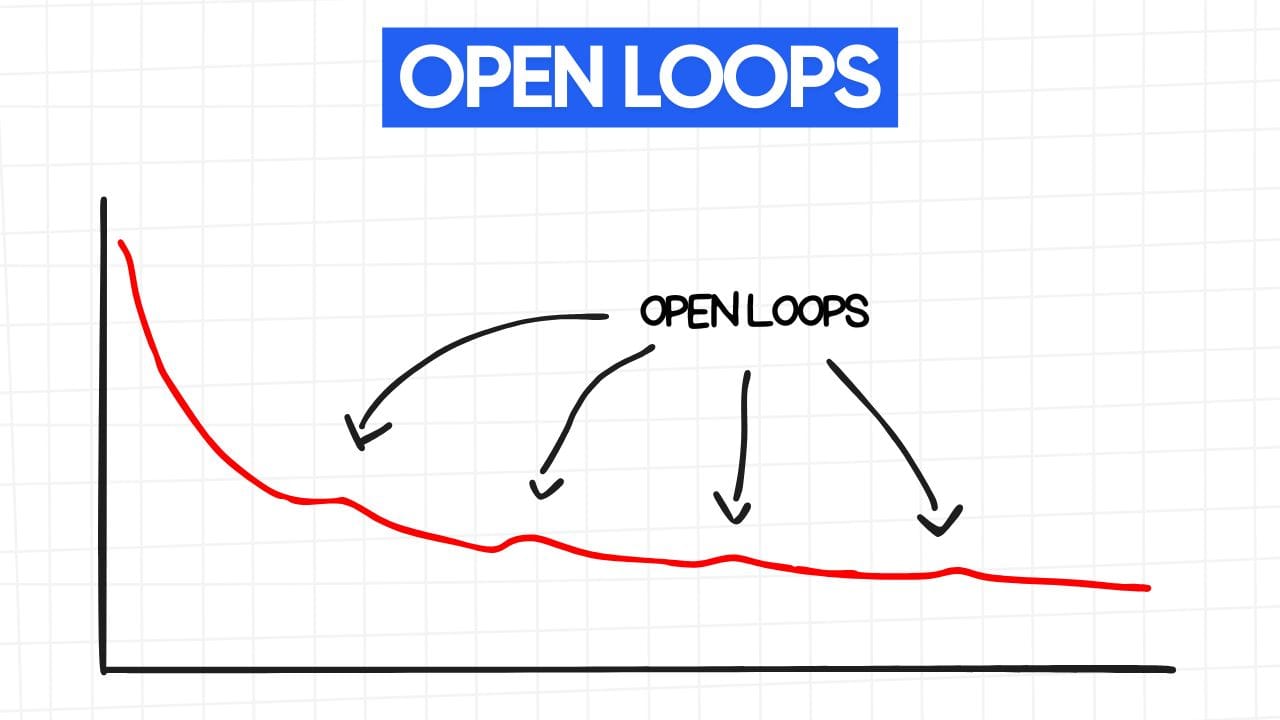
Instead of showing a result and moving on, creators hold something back. They raise a question early and hold the answer until later. That gap builds curiosity. And curiosity drives retention.
In a challenge video, for example, it’s not just “Who wins?” but also “How do they win?” In a cooking video, it’s not just “Here’s the dish,” but “What’s it going to look like, and what went wrong before it worked?”
Open loops let creators drop mini cliffhangers throughout their video. Each one buys a little more attention.
Tailoring the Structure to Your Niche
Not every genre needs the same rhythm. A creator making review videos might focus more on layered insights, while someone doing storytelling might lean into emotional pacing.
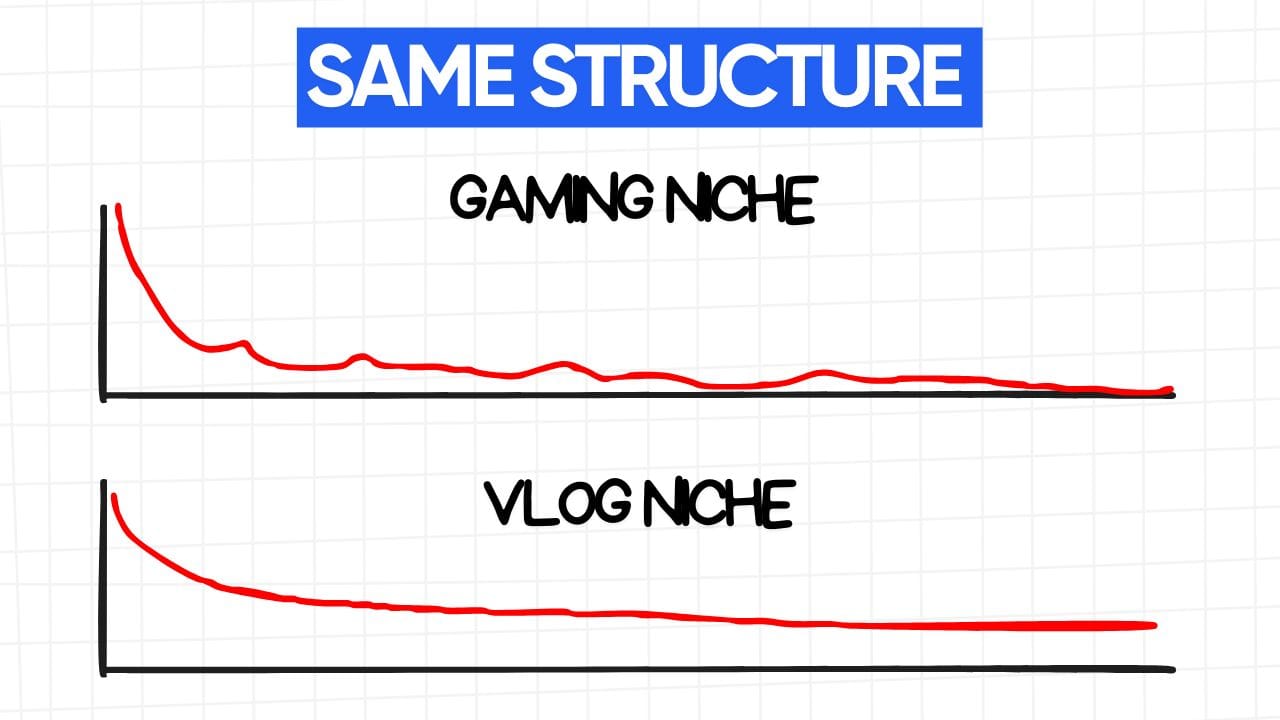
In a cooking video, the mystery might be whether the dish works out at all. In a travel vlog, it could be how the creator handles a surprise twist. In a list-style video, the loop is built into the countdown, viewers want to see what’s next, and what lands at number one.
The structure doesn’t need to be reinvented. But it should be shaped around what your audience expects, and what they’re waiting to see next.
4. Why Copying Big Creators Doesn’t Work for Everyone
What Works for Them Won’t Always Work for You
It’s easy to look at creators like MrBeast or Ryan Trahan and assume their success can be replicated by following their structure. But copying without understanding why something works is one of the fastest ways to lose your own voice, and your audience’s attention.
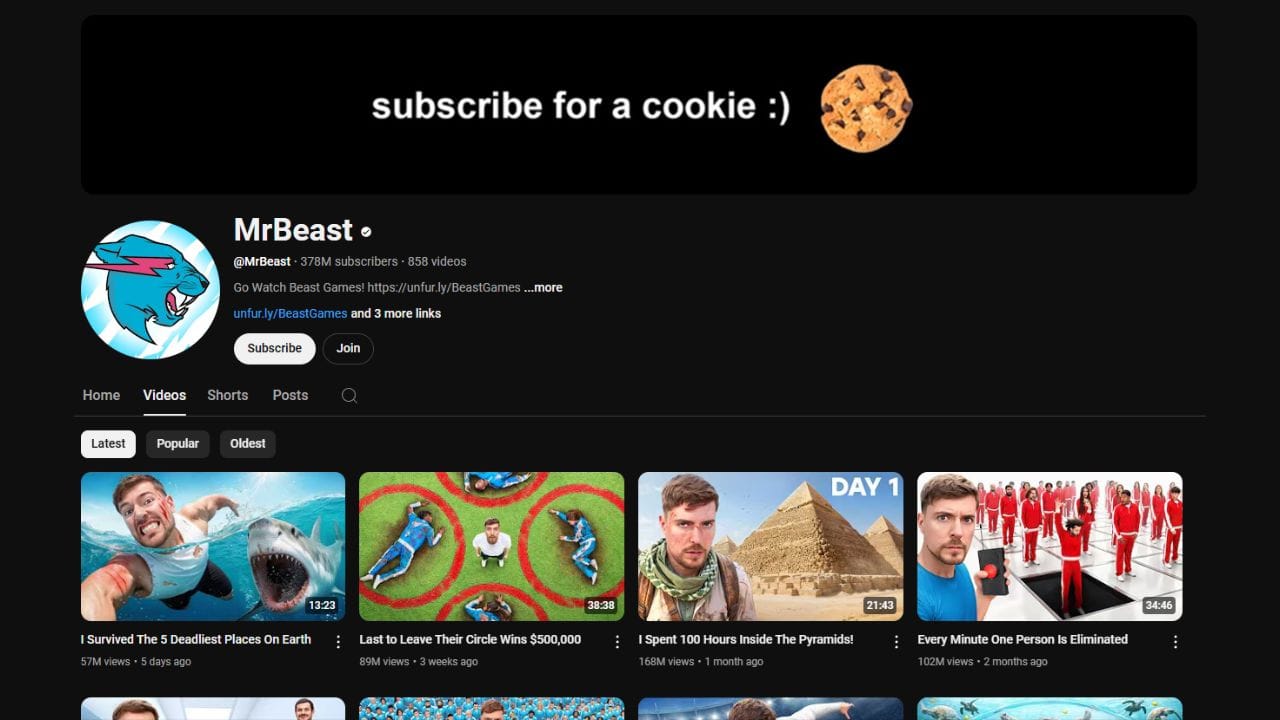
Big creators often succeed because they’ve spent years refining what suits them. That includes their tone, energy, pacing, and camera presence. Their formats work because they’re designed around their strengths, not because they follow a universal blueprint.
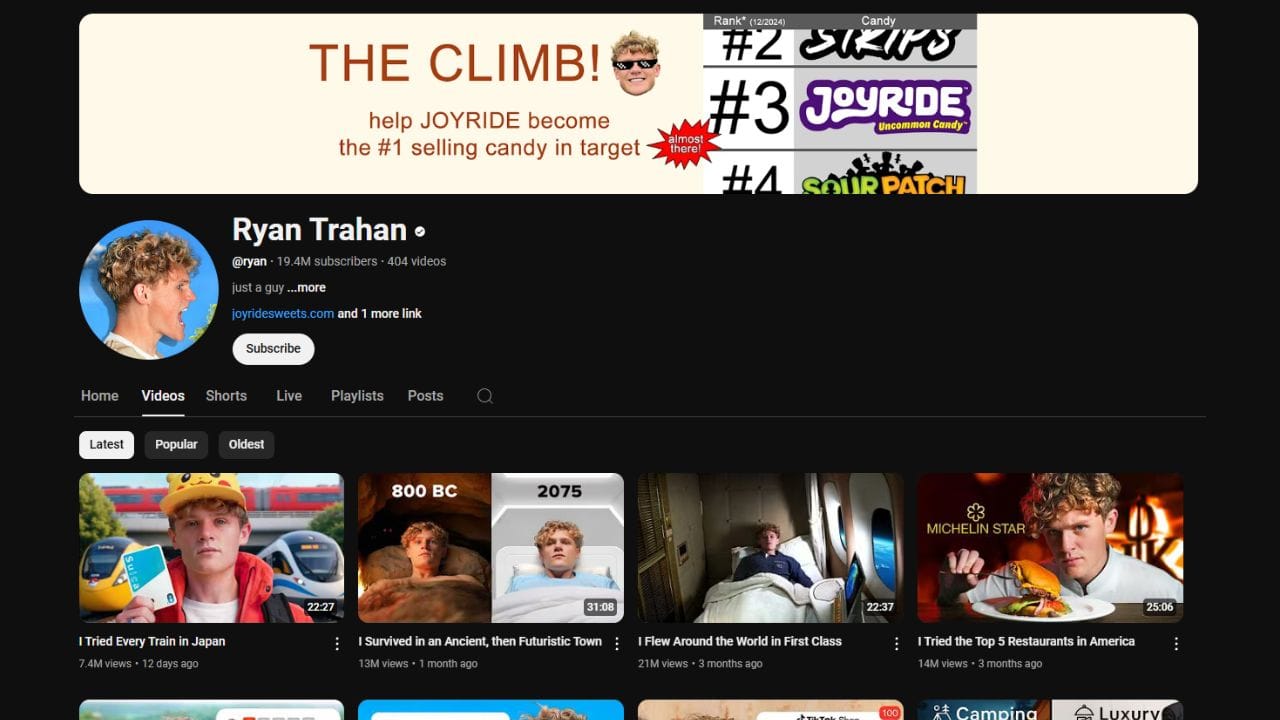
The Problem with Surface-Level Mimicry
Ryan Trahan often opens his videos with casual A-roll, just him, talking to the camera. For him, it works. His delivery is calm, personable, and polished. His space looks good on screen, even when it’s minimal. The vibe is intentional.
But when smaller creators try the same thing without that same on-camera presence or production setup, it can backfire. Starting with a low-energy talking shot in a cluttered room with average lighting doesn’t build trust, it makes viewers click away.
Trying to “borrow” someone’s style without adjusting it for your setup, tone, or topic ends up doing more harm than good.
Your Format Should Match Your Strengths
Instead of copying, it’s more effective to study why something works, and then rebuild it to fit your own style.
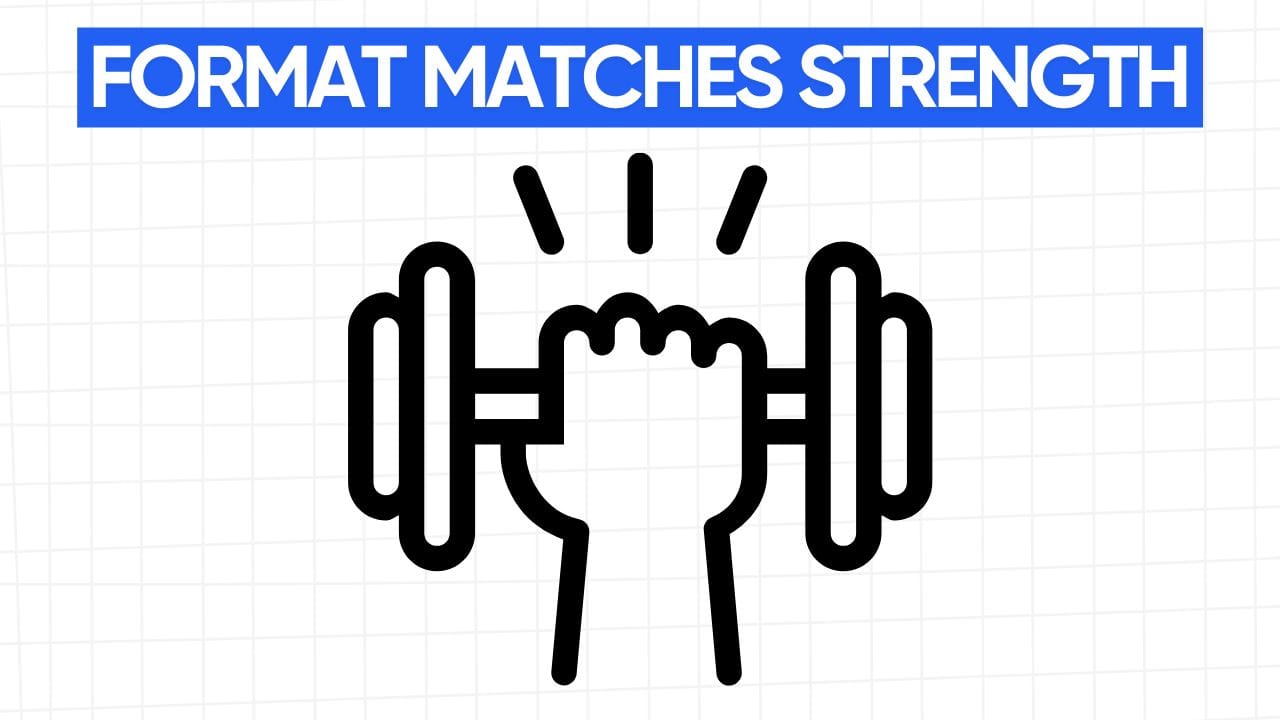
Do you have strong visuals but feel less confident on camera? Lead with footage and voiceover. Are you better at humor than drama? Let your pacing reflect that. Does your niche demand polish or a scrappy, DIY feel? Match your approach to what your audience expects.
What works for a massive creator works because of who they are and the audience they’ve built. Your job isn’t to imitate, it’s to adapt ideas in a way that makes sense for where you are and who you’re speaking to.
5. Three Levels of Hook Writing (And What Most Creators Miss)
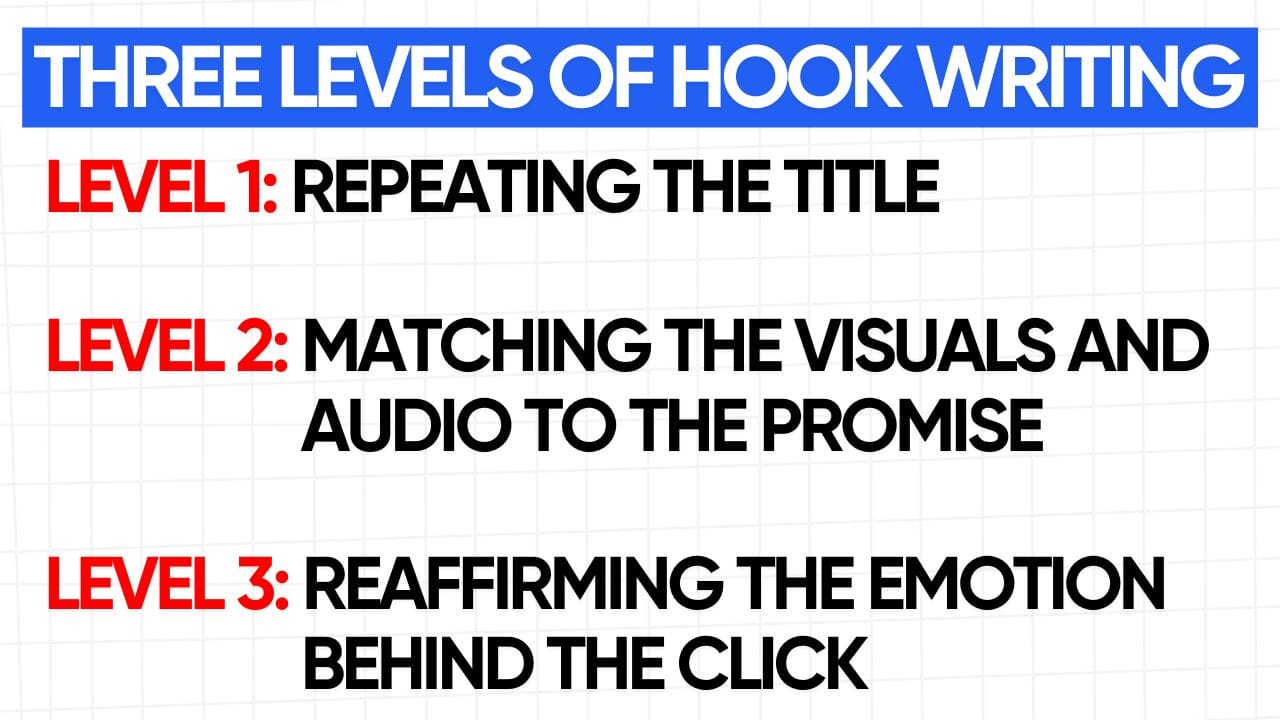
Level 1: Repeating the Title
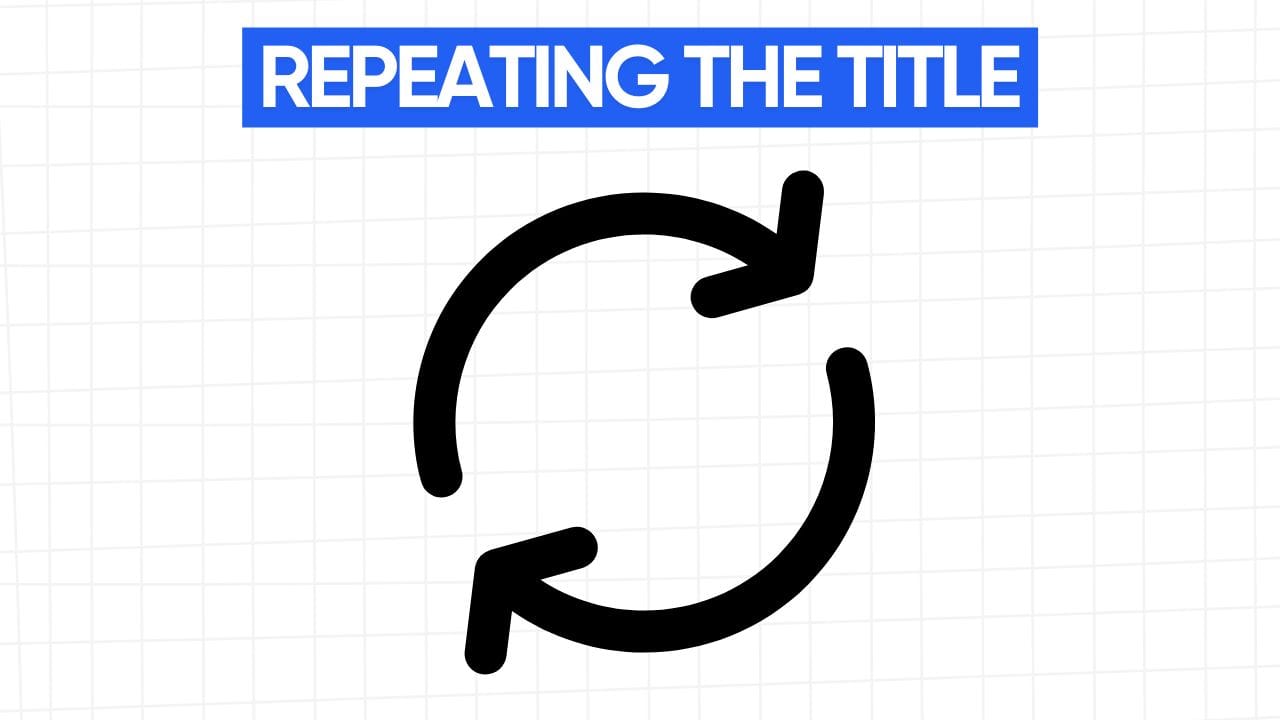
The most common approach to a YouTube hook is simply restating the title in the opening line. It’s straightforward, and sometimes enough to keep a viewer interested.

Example:
Title: “I Spent 100 Hours in Capsule Hotels”
Hook: “I spent 100 hours in capsule hotels”
It’s functional. It confirms what the video is about. But it doesn’t do much beyond that. It doesn’t pull the viewer in emotionally or visually. That’s where most creators stop, and where stronger hooks begin.
Level 2: Matching the Visuals and Audio to the Promise
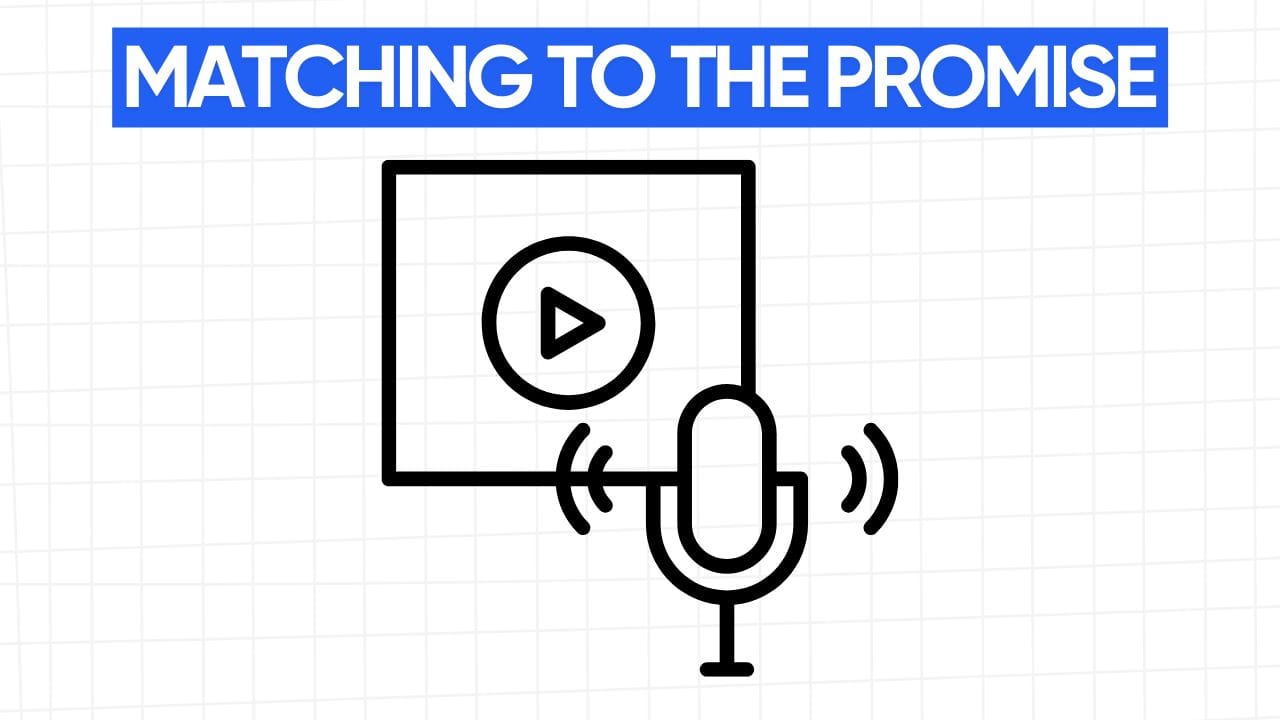
The next layer is reinforcing that opening line with what the viewer sees and hears.
Instead of just stating the premise, you show it. The viewer hears ambient sounds from the hotel, sees the cramped space, and maybe even a time-lapse or visual countdown. That alignment between what’s said and what’s shown builds trust and creates rhythm. It also helps establish the tone early, whether it’s funny, intense, emotional, or suspenseful.
When all those pieces are working together, the hook feels more convincing.
Level 3: Reaffirming the Emotion Behind the Click
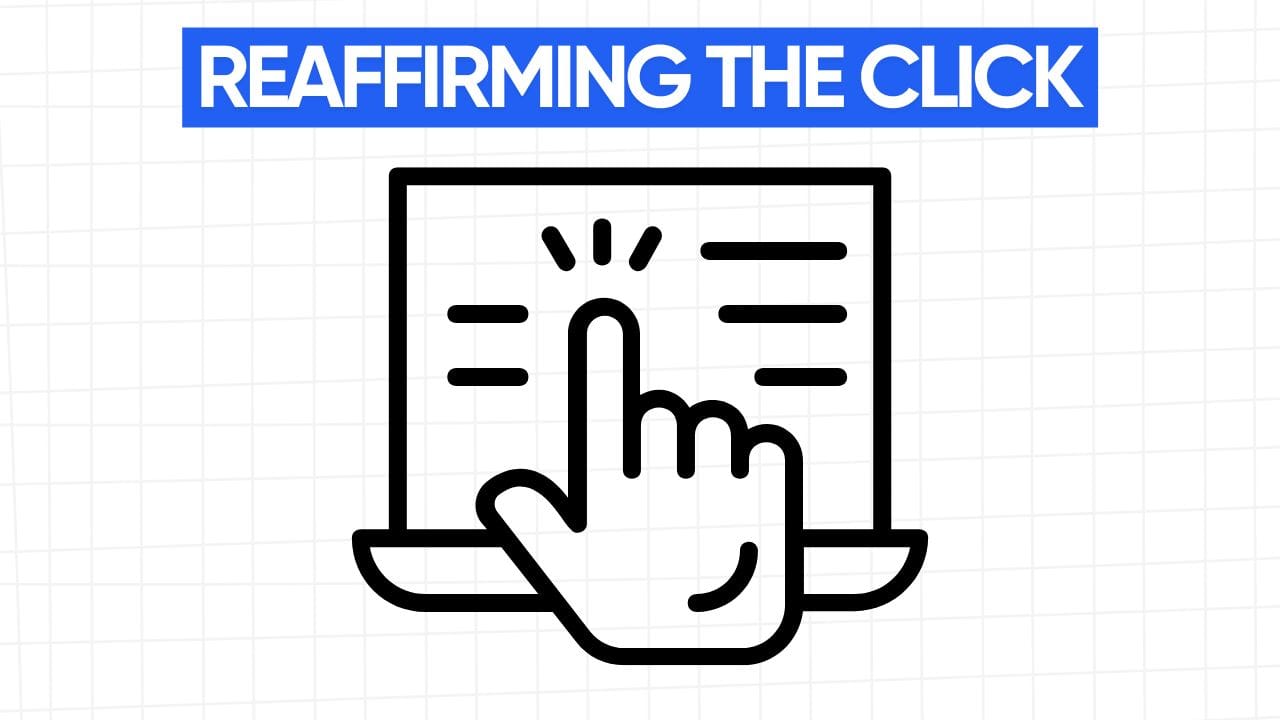
This is the part most creators overlook. Viewers don’t just click on titles, they click on feelings. Curiosity, tension, inspiration, surprise.
A high-level hook doesn't just state the topic. It speaks directly to the emotional reason someone clicked.
If the video is about an intense challenge, the opening might highlight pressure. If it’s about success, the opening might frame what’s at stake. If it’s about learning something, the first few seconds should show proof that the creator knows what they’re talking about.
It’s not about being dramatic. It’s about aligning with the feeling that pulled someone in.
When a viewer thinks, “This is exactly what I was hoping for,” they’re far more likely to stay.
6. Story Structure and Viewer Momentum: The “Staircasing” Effect
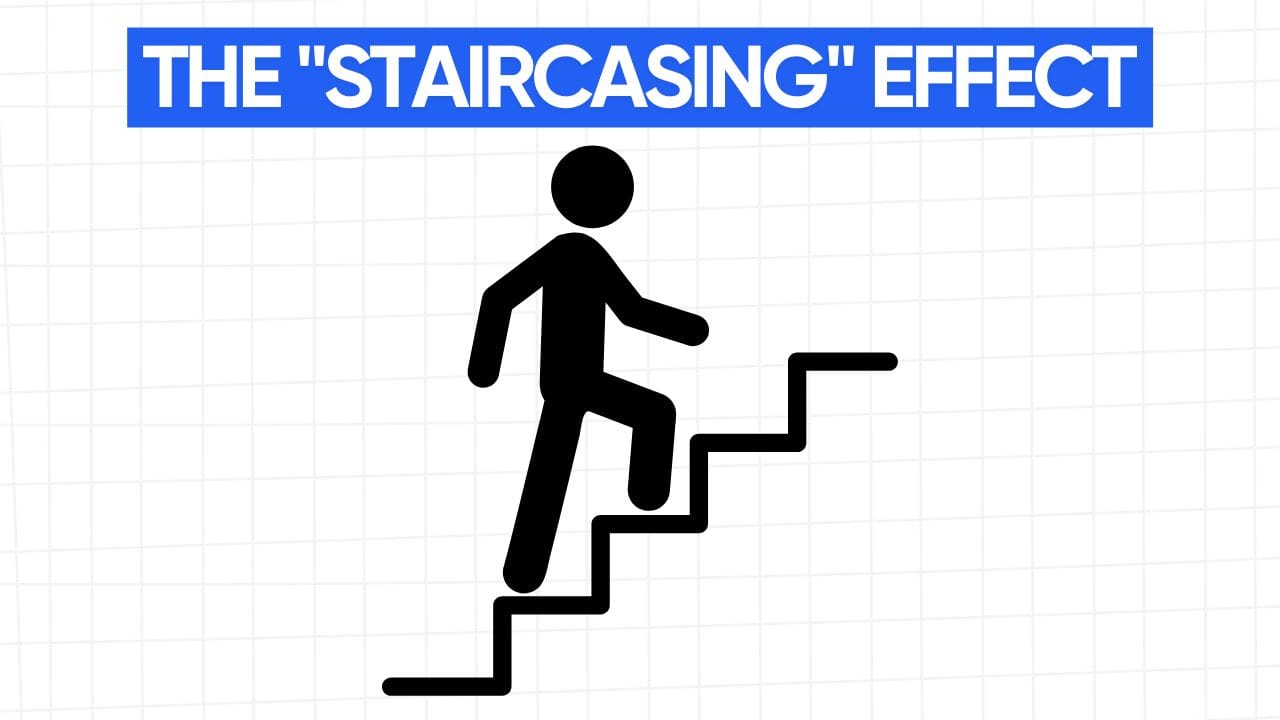
Keeping Viewers Hooked with Progression
Great videos aren’t just a collection of scenes, they build. Segment by segment, moment by moment, there’s a sense that something bigger is coming. That structure creates momentum, and that momentum keeps people watching.
One effective way to think about this is the “staircasing” approach. Each section of the video raises the stakes, introduces something new, or changes the tone just enough to keep it fresh. If the content feels like it’s going somewhere, people will stick around to see where it ends up.
Repetition Kills Curiosity
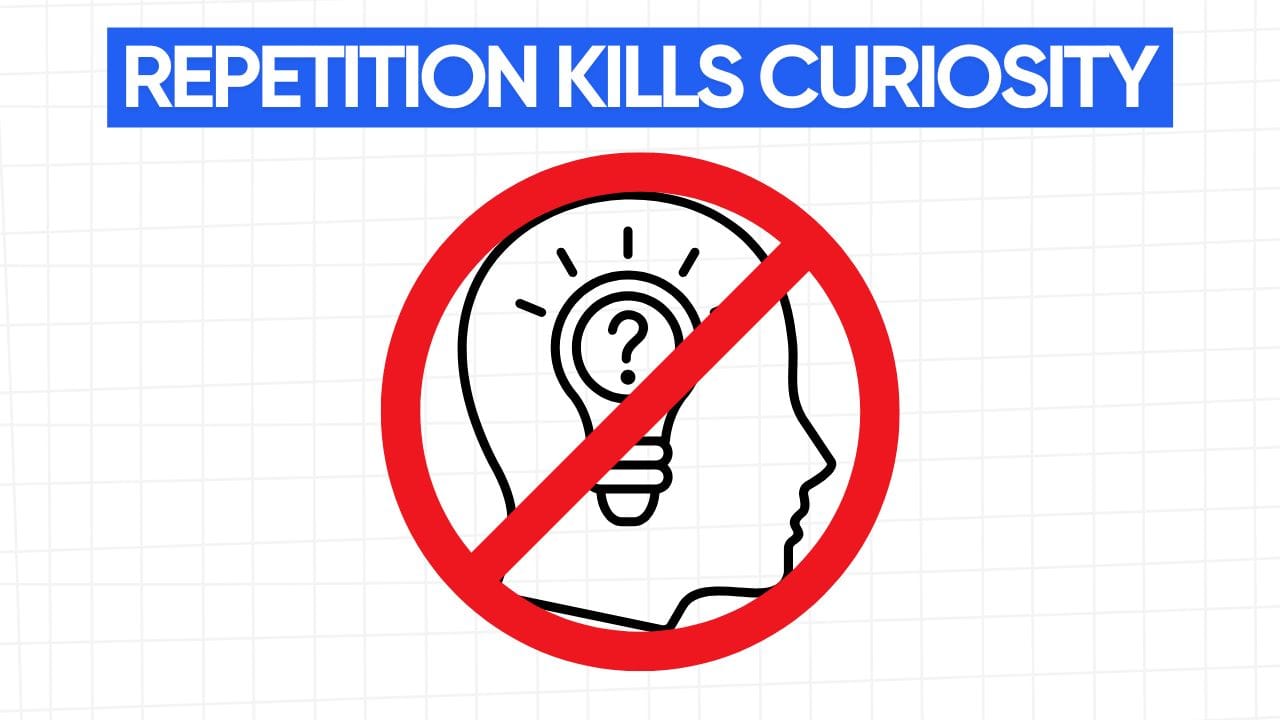
One of the biggest problems with pacing is sameness. When every segment feels like the last, attention drops. Even if the information is solid or the visuals look clean, if there’s no shift in rhythm or tone, it feels flat.
Contrast is what solves that. It could be a change in camera angle, a shift in emotional tone, a sudden twist, or even a well-placed pause. These little changes reset attention and make each new section feel distinct.
In a hotel review video, for example, don’t just move from one room to the next in the same way. Vary the lighting, music, or storytelling style. Use humor in one section, emotion in another. That contrast builds rhythm, and rhythm makes the structure feel alive.
Creating Curiosity Step by Step
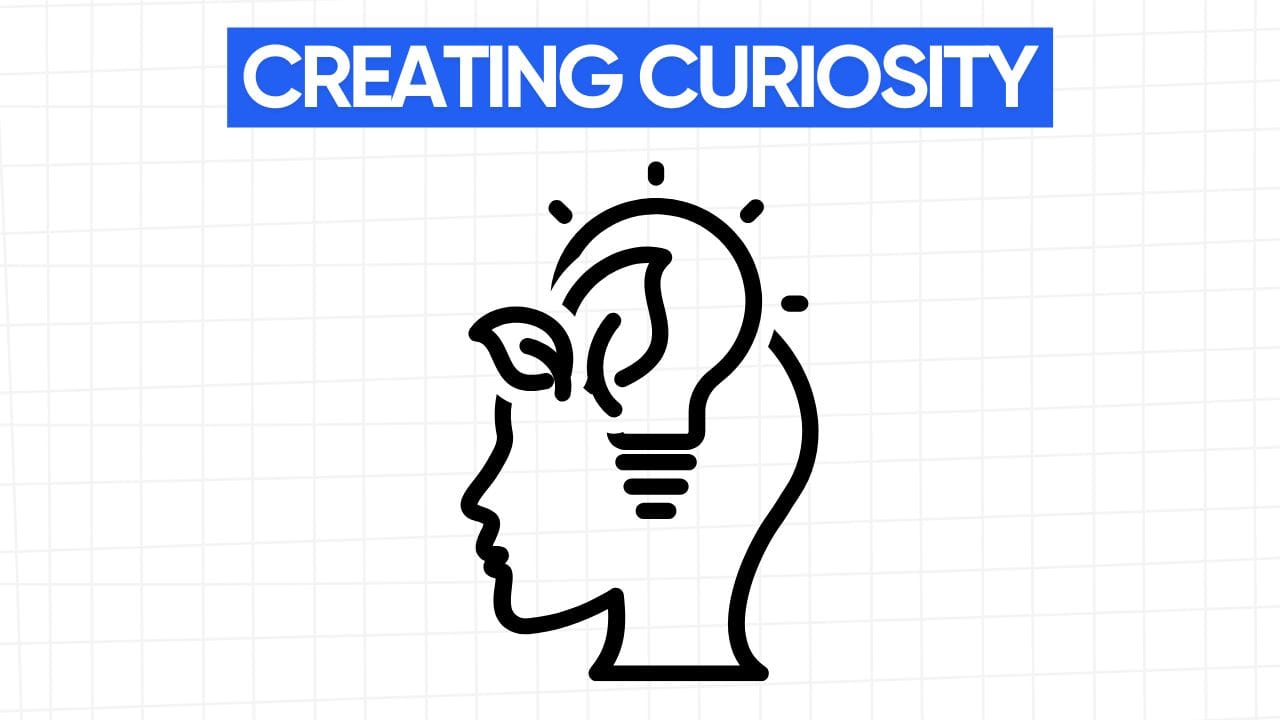
The best creators don’t just rely on their content, they guide the viewer through it. They ask questions without answering them right away. They build mystery around small moments. They let things breathe when they need to, and speed things up when it makes sense.
Every “step” in the staircase should feel like progress. And the more clearly the viewer feels that progression, the more likely they are to stick with the video to the end.
If there’s always something new to look forward to, they’ll keep climbing.
7. The Hero’s Journey on YouTube: Modern Application
A Classic Framework, Reworked for Online Attention
The Hero’s Journey is one of the oldest storytelling structures. It’s the arc you’ve seen in everything from ancient myths to blockbuster films. The basic idea is simple: a character leaves their ordinary life, faces challenges, grows through the process, and returns changed.
But YouTube isn’t film. Creators don’t have two hours, or even two minutes, to set the stage. Viewers expect clarity, momentum, and emotion from the start. So how does this classic structure survive online?
It adapts.
Real Examples from Creators Who Get It
PewDiePie’s “100 Days of Drawing” video doesn’t waste time with a long intro. He starts with his rough sketches right away. That opening moment establishes the “ordinary world”, he’s not good yet. The “call to action” is simple: improve at drawing. The journey is set.
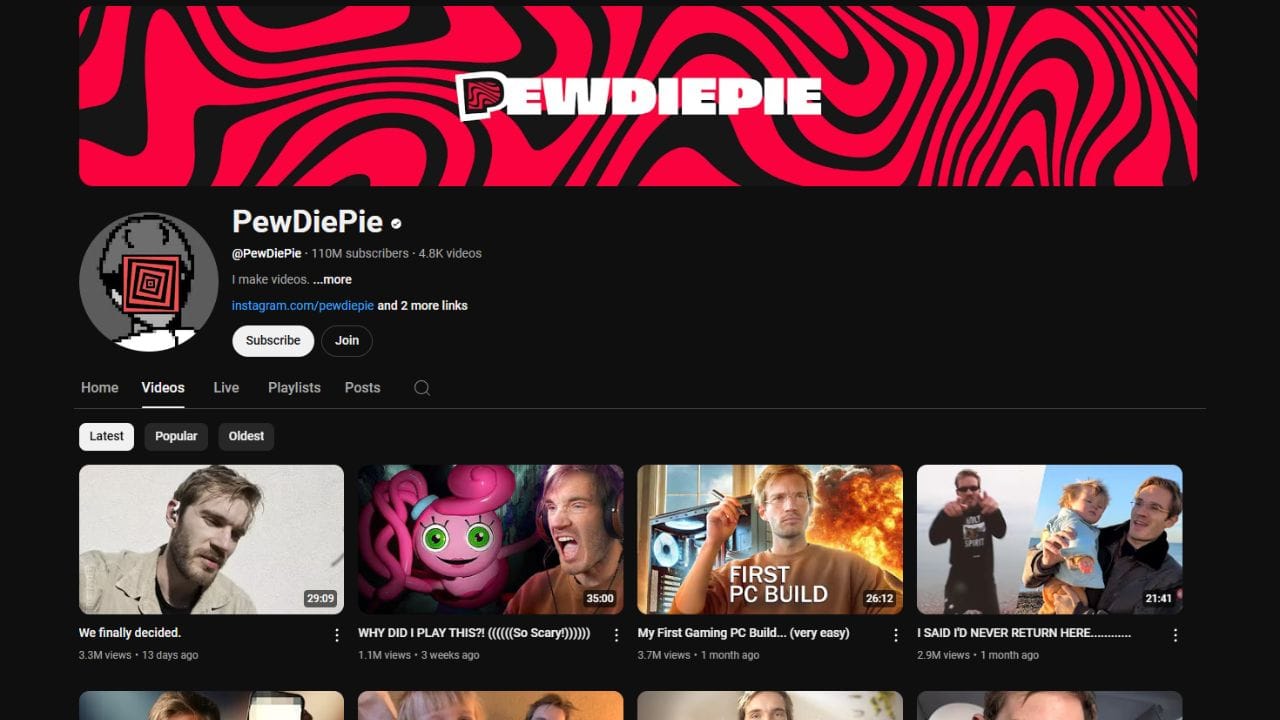
From there, the viewer watches his skills develop across days, with moments of doubt, progress, and personal growth. The structure is clear, but it’s compressed, no filler, just forward motion.
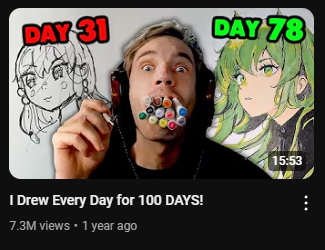
Mark Rober does something similar. Instead of explaining who he is or what he does, he opens with action: a robot, a build, a surprise result. Right away, you get who he is, a creative problem-solver. His “adventure” is building something unusual, and we’re invited along for the process.
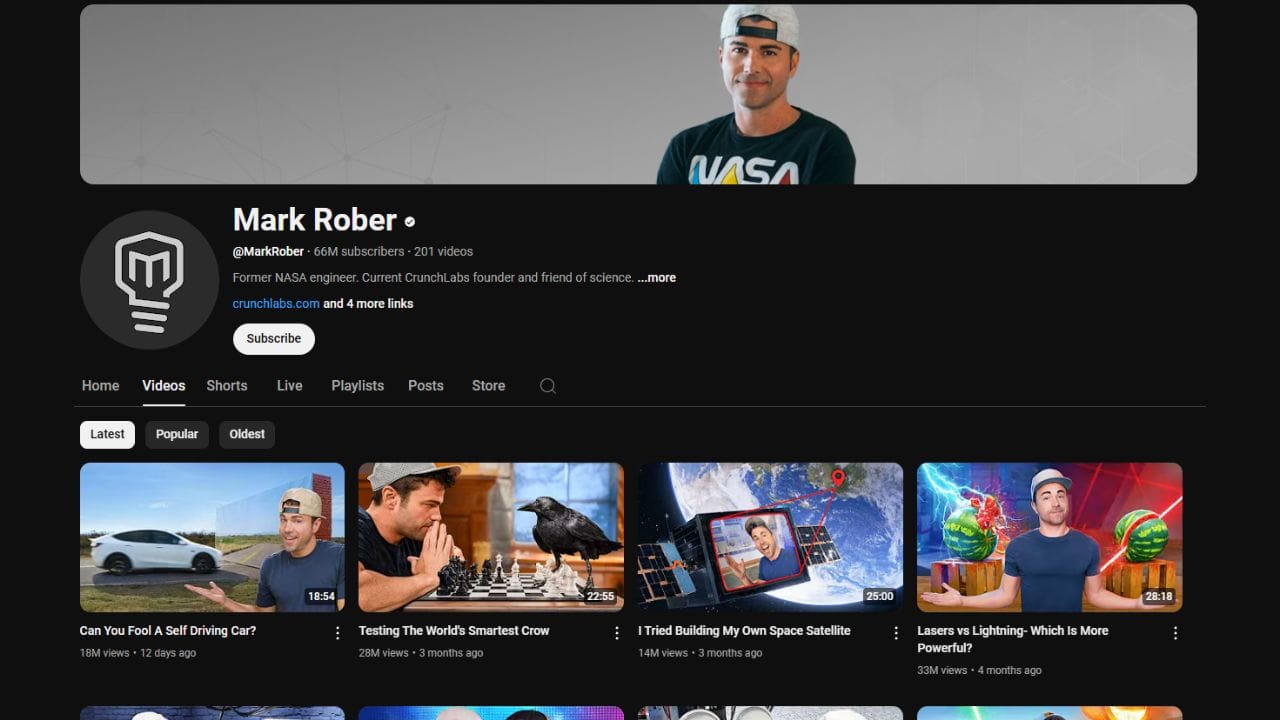
In both cases, the core of the Hero’s Journey is there, but it’s shaped to fit attention spans and platform culture.
Why Long Intros Don’t Work Anymore
Traditional storytelling often spends time “setting the stage.” But on YouTube, that can backfire. Viewers don’t wait around for context, they leave.
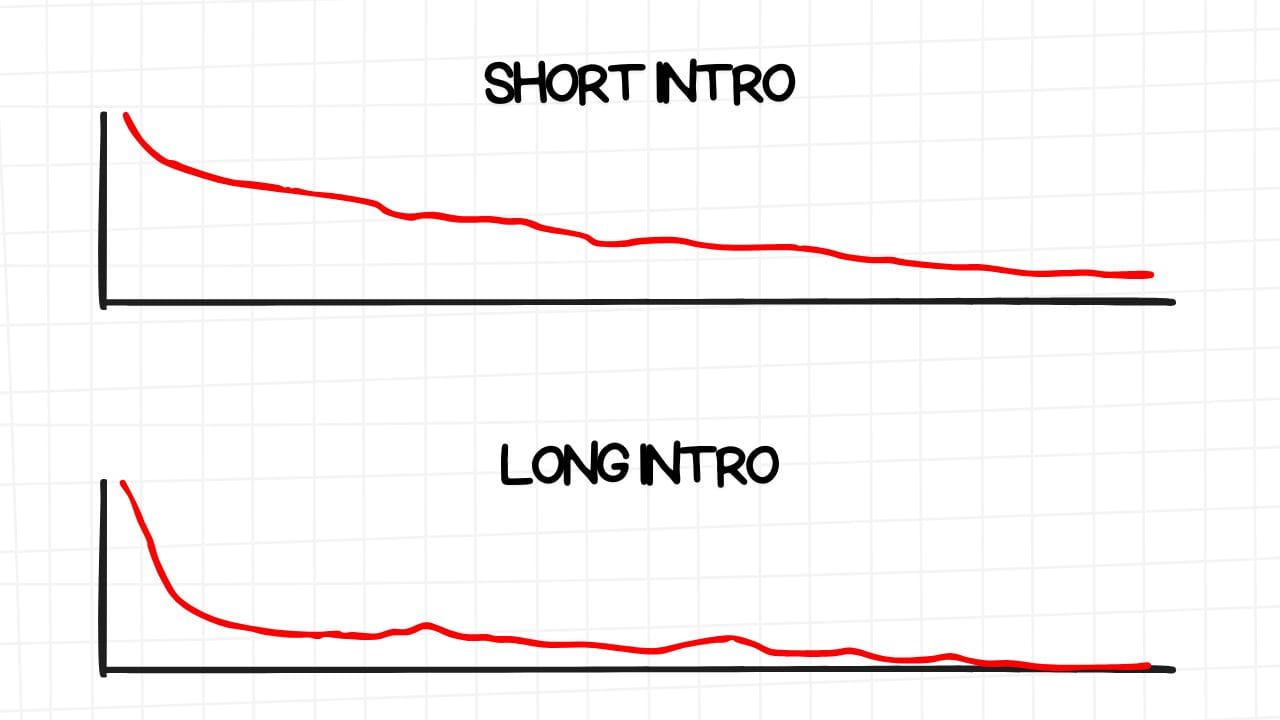
Modern creators skip long exposition and jump straight into the core idea. Characterization happens through action. Motivation is implied. And backstory is revealed after interest is secured.
That doesn’t mean skipping storytelling. It just means shifting where and how you do it.
Even a few lines or quick visuals can establish enough for the viewer to care. The rest unfolds as the video moves forward, fast enough to hold attention, structured enough to feel like a journey.
8. Real Case Study: 1M Views in 7 Days
How a 100-Hour Hotel Video Took Off
A creator named JW released a video exploring capsule-style hotels, and within seven days, it passed one million views. At the time, his channel had under 20,000 subscribers. So what made this one stand out?
It wasn’t just the idea. It was how the story was told. Every detail, from pacing to structure, was designed to hold attention and build curiosity.
Crafting Open Loops and Visual Promises
The first change was simple: show the actual hotel that viewers clicked on in the thumbnail, immediately. That visual aligned with the title, making the viewer feel like, “Yes, this is the video I came for.” That alone reduced early drop-off.
Then came the use of open loops. For example, a short clip of a mysterious door, shown with no explanation, was placed early in the video. It didn’t connect to anything at first. But the door stood out visually: dark, isolated, and completely different from the rest of the vibrant hotel shots.
That moment created a question: What’s behind it? Viewers kept watching to find out.
Later in the video, that question was answered: it was a Pokémon-themed hotel room. The mystery, built early on, paid off in a way that felt satisfying and intentional.
Bridging Sentences That Keep Things Moving
Another key detail: transitions between segments weren’t left to chance. Instead of flat lines like, “Next, I went to another hotel,” JW used phrases like, “But the next place completely changed the vibe…”
That kind of sentence doesn’t just bridge, it adds momentum. It hints that something new, different, or surprising is coming. That keeps the audience from mentally checking out between segments.
When viewers know there’s more to come, and that it might be better, stranger, or funnier than what they just saw, they stay.
The Result
The video didn’t rely on big stunts or viral gimmicks. It used storytelling structure:
- Strong visual openings
- Carefully placed open loops
- Clean pacing
- Thoughtful transitions
Those elements combined to lift a solid idea into something more watchable, and shareable. One million views in a week didn’t come from luck. It came from storytelling done right.
9. Rhythm in Storytelling: Why Pacing Matters
Stories Aren’t Just About What Happens, They’re About When
Every good video has a rhythm. That rhythm is built from how moments are spaced, how fast scenes move, and how emotions rise and fall across the timeline. Without it, even strong ideas can feel flat.
Some of the most memorable scenes in YouTube videos land because they hit at just the right time. Whether it’s a laugh, a reveal, or a plot twist, timing shapes how it feels.
Emotion and Comedy Live in the Gaps
Emotional moments need space. Comedic beats often land best just off the expected tempo. If everything hits too fast, nothing sticks.
In storytelling, holding just a little longer on a shot can make a moment feel heavier. In comedy, delaying a punchline by even a second can make it hit harder. That pause is often where the magic happens.
Timing isn’t only about speed, it’s about contrast. A fast segment feels faster when it follows a slower one. A quiet moment feels more powerful after chaos. That push and pull keeps viewers from settling into autopilot.
The Problem with Nonstop Speed
There was a stretch of time when creators leaned hard into rapid-fire editing. Jump cuts every few seconds, text flying in, sound effects nonstop. It worked, until it didn’t.
When every second is maxed out, the audience stops feeling anything. There’s no time to absorb, no time to anticipate, no room to care. It’s all noise.
Today’s stronger storytellers mix it up. They use fast sections when it matters, then let things breathe. That rhythm shift is what keeps the video engaging, even over longer runtimes.
Building Rhythm On Purpose
Think about pacing like music. Not every beat should be the same. Let moments rise and fall. Let funny scenes land on their own time. Let emotional ones hold for a second longer than expected.
When creators pay attention to rhythm, viewers feel it, even if they can’t explain why. The video just flows. And when it flows, people keep watching.
10. How Creators Can Avoid Repetition Without Losing Cohesion
Repetition Isn't Always Bad, Until It Is
Every viewer wants consistency, but no one wants to feel like they’re watching the same thing on loop. That’s the line creators walk every time they edit a video. Too much sameness? People lose interest. Too much variation? It feels messy.
The goal is to break repetition just enough to keep things fresh, without confusing the viewer or breaking flow.
Break the Pattern Visually
The fastest way to lose attention is by sticking to the same shot type for too long. If you’re talking to the camera in the same framing for minutes on end, even great dialogue won’t save you.
Changing angles, distance, lighting, or movement helps. Mix in cutaways, overlays, and b-roll that feels different from the last. Every shift resets the viewer’s focus without breaking the message.
Think of visuals like pacing tools. They don’t just support what you’re saying, they shape how it feels.
Use Contrast in Tone and Rhythm
Storytelling isn’t just about scenes, it’s about energy. If every segment carries the same tone, even the best ideas get dull.
Switch it up. A serious section can be followed by something lighter. A fast-paced montage can be slowed down with a reflective voiceover. These shifts keep the emotional pacing dynamic, and let the viewer engage on different levels.
The best creators use rhythm like editors use music, building, pausing, and picking back up with variation that keeps the content alive.
Know When to Break the Pattern
Sometimes, doing something different on purpose is what makes a moment stand out. That could mean using silence instead of music. A handheld shot in the middle of a polished sequence. A sudden cut to a personal moment after a big set piece.
Used right, these breaks catch attention and make key moments feel earned. They signal: this part matters.
The trick is doing it with intention. Break patterns where they support the message, not just for the sake of novelty.
11. Starting From Scratch: A Storytelling Guide for New Creators
Begin With What the Viewer Wants
Before any camera is turned on or script is written, there’s one question every creator should ask:
Who’s watching, and what do they want to get out of this?
Understanding viewer intent is the foundation of every strong video. If someone clicks expecting a calm tutorial, opening with high-energy edits and jump cuts will feel off. If they’re expecting entertainment, starting with a lecture loses them in seconds.
The best creators don’t just know their audience, they design for them.
Match the Style to the Expectation
Not every format fits every topic. A business video isn’t built the same way as a prank video. A slow, reflective video essay needs a different tone than a challenge vlog.
New creators often make the mistake of using the styles they see from big names, without asking whether that style makes sense for what they are making.
If you’re giving advice, present it in a way that feels clear and trustworthy. If you’re telling a story, give it room to breathe. The presentation should serve the message, not distract from it.
Let the Message Shape Everything Else
Once you know what the viewer wants, and how they want to receive it, the rest becomes simpler.
The visuals, tone, and script should all support the same goal. That might mean filming in a calm setting, keeping edits minimal, or focusing on personal voiceover instead of face-to-camera shots.
It’s easy to get caught up in equipment or flashy transitions. But storytelling always comes back to this:
Clarity, rhythm, and connection.
Start by making videos that speak directly to your audience’s needs, in a tone that matches what they came for. That’s what builds trust, and keeps them watching.
12. Storytelling Across Video Lengths: Short vs. Long
Why Longer Videos Reward Character and Build-Up
Long-form videos give creators space to do something most short content can’t: develop a connection. Whether it’s a personality, a journey, or a concept, having more time means there’s room for depth.
Take a documentary-style video. The first few minutes might introduce the setup, but the real value comes from the viewer getting to know the person or story. That investment builds over time, and by the end, the payoff means more because there’s been real buildup.
One creator shared a story about a Super Smash Bros. player named Amsa, who uses a low-tier character no one else does. The video followed his growth, struggles, and attitude. By the time the climax hit, viewers weren’t just watching, they were rooting for him.
That emotional connection doesn’t work if it’s rushed. Long content gives room for stakes, pacing, and emotional weight to land properly.
Short Videos Need to Hit Fast and Stay Sharp
On the other hand, shorter videos win when they’re punchy. Attention spans are tighter, so every second has to count. There’s less time to explain, which means the message, or the moment, has to be felt immediately.
That doesn’t mean short videos can’t tell stories. It just means the story has to be tighter. Fewer characters. Cleaner pacing. Quicker context.
Many successful short-form creators use strong visuals, fast editing, and emotional cues (like humor, suspense, or surprise) to get their point across in seconds.
The goal is the same, keep the viewer watching, but the structure is trimmed to focus only on what matters.
Choose the Right Strategy for the Format
A character-driven arc that works at 40 minutes will fall flat at 90 seconds. And trying to cram high-energy short-form pacing into a 20-minute video often makes it exhausting to watch.
Every video should be built around how much time the viewer is willing to give, and what kind of experience they’re hoping to get.
For longer formats, let moments build. For shorter ones, deliver quick rewards.
Both work. The key is knowing which one you're making, and shaping the story to match.
13. Creator Picks: Who Nails Storytelling on YouTube?
Michelle Khare: Turning Challenge into Character
Michelle Khare doesn’t just document challenges, she turns them into full narratives. Each video follows a clear emotional arc, with conflict, self-doubt, and transformation woven throughout.
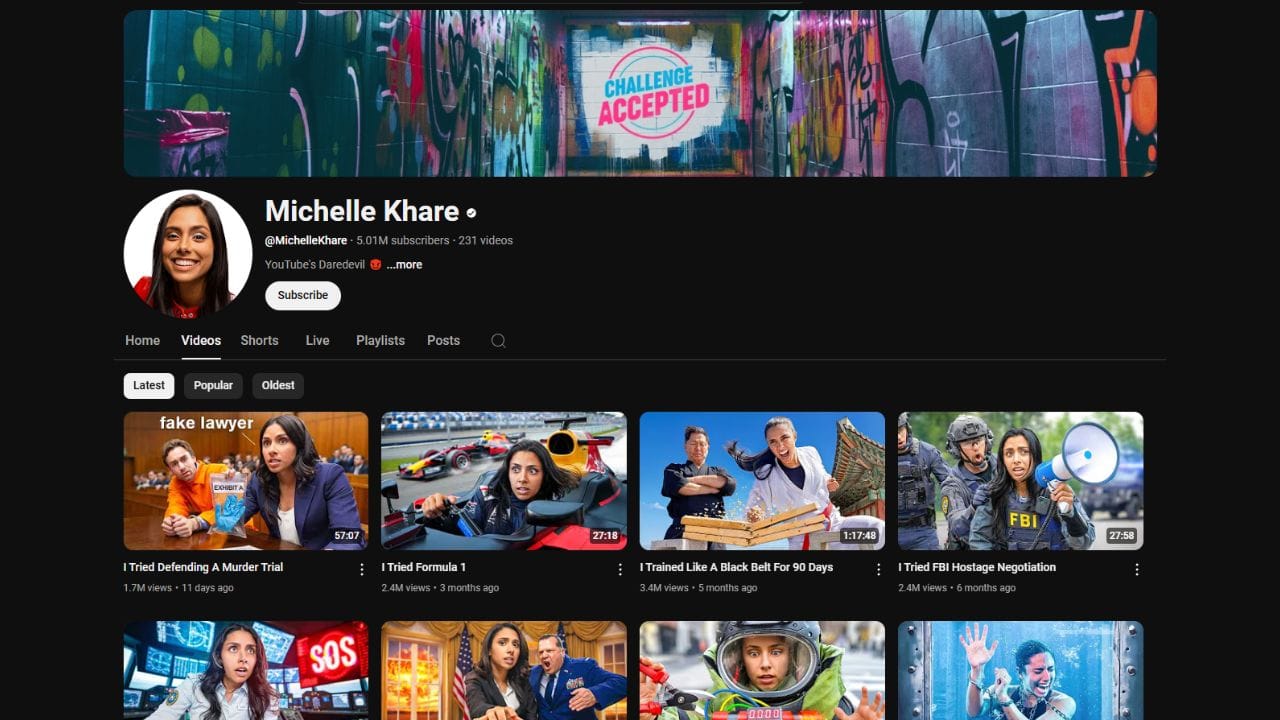
What makes her storytelling stand out is the personal investment. The stakes aren’t just external. The viewer sees what the challenge means to her, how it pushes her, and what it reveals. That kind of storytelling invites the audience to feel the pressure, not just watch it.
She also knows how to pace those moments. Small wins, setbacks, and honest reactions keep the viewer engaged across longer runtimes. It’s not just about the end result, it’s about how she gets there.
STX Films: Emotion Through People
STX Films focuses on making creators feel human. Whether it’s a profile, a journey, or a day-in-the-life format, their videos center the personality behind the content.
![A dark-themed YouTube channel page for STXfilms. The channel banner features the STXfilms logo in white letters on a light gray background. The profile picture is the STXfilms logo on a dark gray background. The channel name "STXfilms" is in white letters, followed by a black dot. Below is the channel username "@STXFilms", the subscriber count (223K), and the video count (591). The banner also includes the text "The official YouTube channel for STXfilms. A next-generation film studio producing star ...more", a link to their Facebook page, and a "Subscribe" button. The channel page displays tabs for "Home," "Videos," "Shorts," "Live," "Playlists," "Posts," and a search icon. Below these tabs are sorting options for "Latest," "Popular," and "Oldest." The video thumbnails show various movie trailers, with titles like "Operation Fortune: Ruse de guerre | Official Trailer | Coming Soon," "National Champions Movie | Official Trailer | On Demand December 28th," "Queenpins | Official Trailer [HD] | In Theaters September 10 and coming soon to...," and "The Mauritanian | Anatomy of a Scene | Rent or Own on Digital HD, Blu-ray & DVD Today."](https://1of10.com/blog/content/images/2025/03/study-your-graphs--84-.jpg)
They use simple but effective storytelling:
- Clean character introductions
- Real moments of tension or doubt
- Scenes that feel earned, not staged
The result is a story that moves, but doesn’t feel rushed. Every scene adds something. Every beat reveals more about who the subject really is. That kind of intentional structure gives their work weight, even when the content feels casual.
MrBeast: Master of Structure and Scale
MrBeast is known for big numbers, wild stunts, and huge giveaways, but underneath all of that is a deep understanding of story pacing.
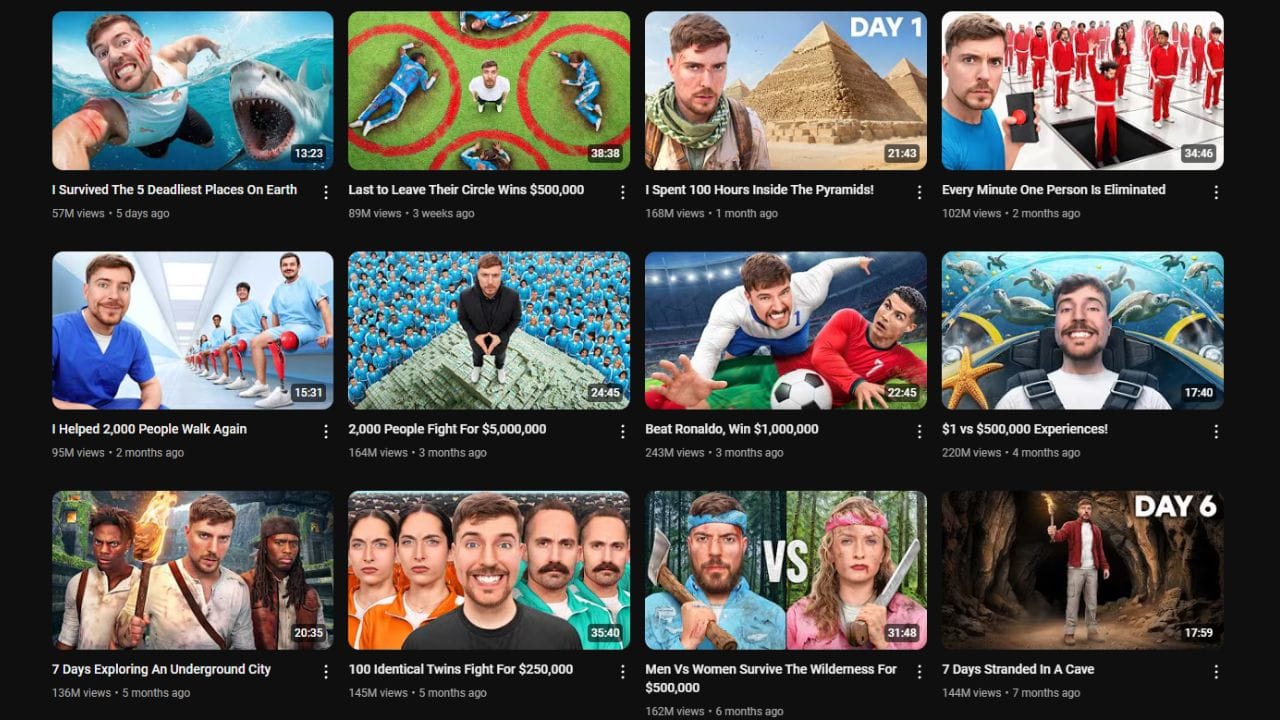
Almost every video follows a structure that’s been carefully crafted:
- Start with spectacle
- Build tension
- Break with humor
- Drop in a twist
- End with a massive payoff
Even when the concept is simple, the structure keeps it engaging. There’s always a reason to keep watching, whether it’s to find out who wins, how much someone gets, or what unexpected thing happens next.
MrBeast also plays with rhythm better than most. Fast when it needs to be. Slow when it matters. It’s this mix that keeps his content from feeling repetitive, even when the format is familiar.
What They All Share
Each creator has their own voice, but what ties them together is clarity and control. They know what they want the viewer to feel. They know when to push and when to pause. And every storytelling choice serves the larger experience.
It’s not about copying their style, it’s about understanding how deliberate storytelling can make any idea stronger.
Conclusion
Views come and go. Algorithms shift. But one skill stays valuable no matter the format, genre, or platform: the ability to tell a story that holds attention.
These aren’t just techniques for retention. They’re tools for connection. The creators pulling millions of views aren’t just good at content, they’re good at shaping emotion, movement, and structure into something that feels complete.
And once a viewer finishes one video all the way through, they’re far more likely to watch the next.
